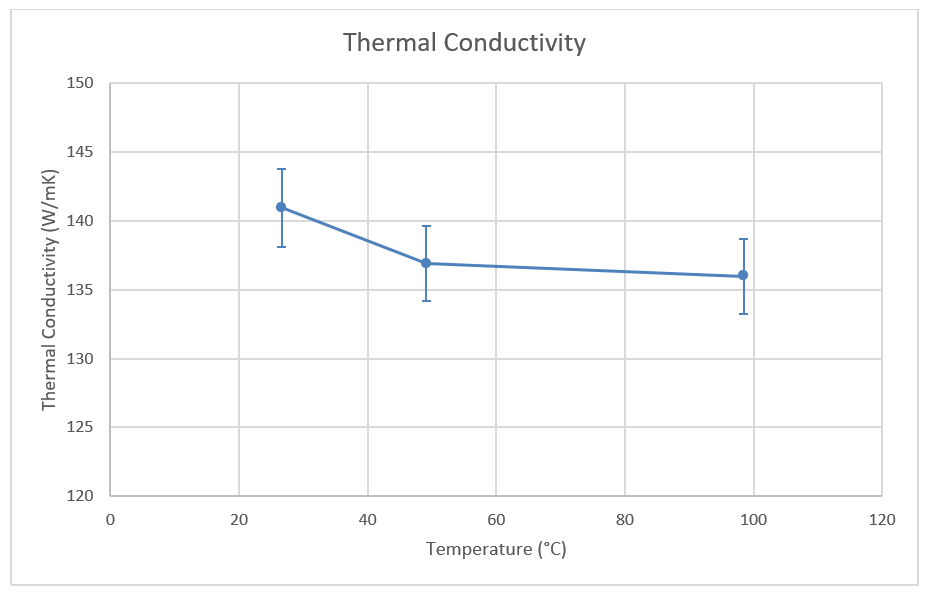Typical alloying elements of aluminium are copper, manganese, magnesium, tin, zinc and silicon. Aluminium alloys can be grouped depending on their manufacturing process into casting alloys or wrought alloys, both of which are further subdivided into heat-treatable and non-heat-treatable.
By the alloying process the mechanical and thermal properties of the material are changed, for example a changed weight, melting point, hardness or tensile strength. Application field of the alloys are engineering, automotive, aerospace and generally the metal industry.

The thermal conductivity of an aluminium alloy was investigated from room temperature to 100 °C using the THB (THB L56). For the measurement the QSS sensor was placed between two sample pieces and pressed together for an improved thermal contact.
The configuration was placed in a furnace and the temperature steps were room temperature, 50 °C and 100 °C. At each step the measurement was repeated three times and the results were averaged. In the diagram one can see that the thermal conductivity is slightly decreasing with temperature. The error bars show an uncertainty of 2 %.

